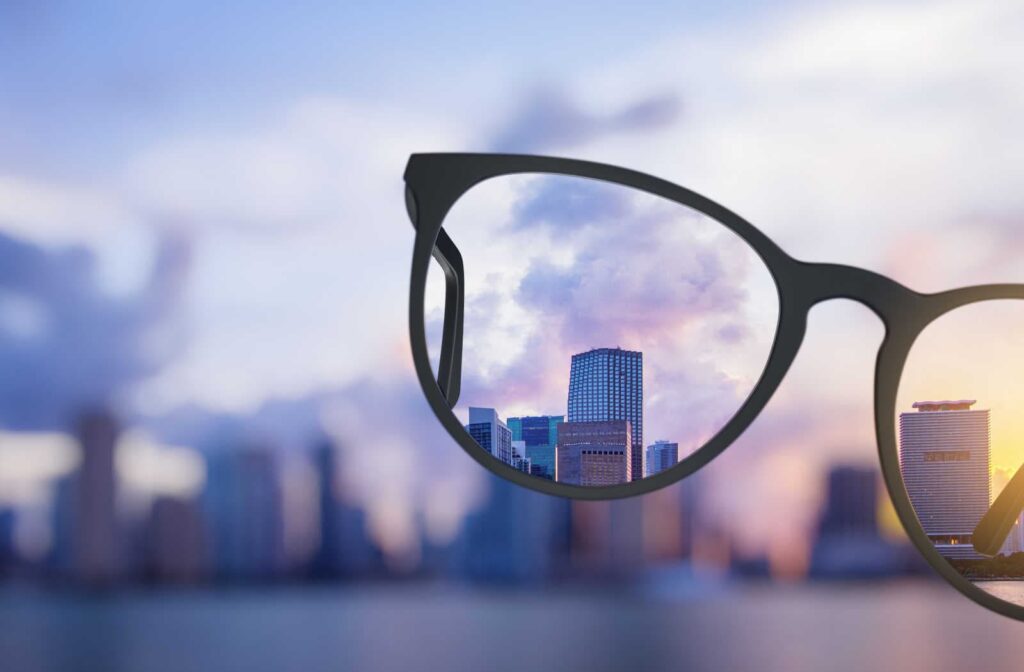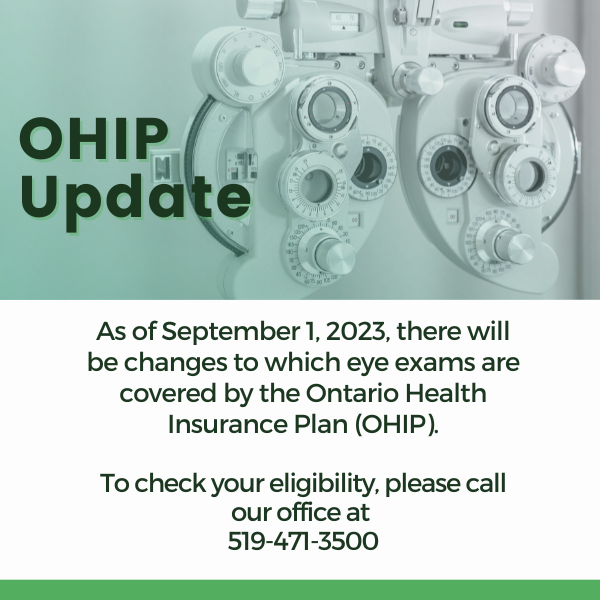Proper vision is essential for many things. It allows us to learn, perform everyday tasks, and participate in sports and leisure activities.
Squinting and difficulty seeing can make the above more challenging. These symptoms may indicate common vision problems called refractive errors, including hyperopia and myopia. So, how do you tell the difference?
Hyperopia or farsightedness is when you have clear distance vision, but nearby objects are blurry. Conversely, myopia or nearsightedness is when near vision is clear, but you have blurry distance vision.
Regular eye exams for children and adults can ensure help with early detection of these conditions to treat and preserve your vision.
How to Tell If You’re Near or Farsighted?
An eye exam is the best way to diagnose a refractive error. But if your vision is unclear, you can check if you are near or farsighted by testing your blurry vision.
First, rest your eyes by closing them for a few minutes or looking away from screens. Then read a few pages in a book and notice if the words are blurry or if you have a headache after. If this is the case, you may be farsighted.
Next, look at something 10 feet away. You may have myopia if the words or images aren’t clear enough.
Difficulty seeing near and far can make you nearsighted or farsighted because both eyes develop different conditions. However, this is not a diagnosis; you still need to visit an eye doctor to confirm a diagnosis.
Difference Between Hyperopia & Myopia
Hyperopia and myopia are refractive errors. A refractive error is a vision condition in which the eye does not properly bend or refract light to focus an image on the retina (the light-sensitive tissue at the back of the eye). It results in blurred or distorted vision.
Hyperopia occurs when the eye is short or the cornea is flat, causing light to focus behind the retina instead of directly on it. People with hyperopia have difficulty seeing objects up close but can see distant objects.
Myopia occurs with too long an eye or a steeply curved cornea, causing light to focus in front of the retina instead of directly on it. People with myopia have difficulty seeing distant objects clearly but can see objects up close clearly.
Factors that can increase your risk of developing myopia:
- If one or both parents are myopic
- Prolonged close-up activities
- Long periods in front of screens
- Lack of time outdoors

Symptoms of Hyperopia & Myopia
Hyperopia and myopia share some common symptoms:
- Squinting to see clearly
- Eye strain
- Headaches
Hyperopia symptoms can include:
- Blurry near vision
- Burning eyes
- Aching in or around the eyes
- Eye discomfort
- Headache after doing prolonged close tasks, such as reading, writing, computer work, or drawing
Myopia symptoms can include:
- Persistent squinting
- Unaware of distant objects
- Excessive blinking
- Eye rubbing
- Sitting close to the television or whiteboard
- Difficulty reading signs
- Blurry vision in dim light, such as nighttime driving
Complications of Hyperopia & Myopia
Various complications can result without early detection and treatment:
- Hyperopia: Associated with a crossed eye, reduced quality of life, eye strain, and impaired safety.
- Myopia: Poor school experience, reduced quality of life, eye strain, impaired safety, and increased risk of other eye conditions.
Treatment & Management of Myopia & Hyperopia
Treatment for hyperopia and myopia depends on the severity of the condition, which can include corrective glasses, contact lenses, or refractive surgery. Management of myopia and hyperopia includes regular monitoring for complications.
Myopia Management
Treatment methods such as glasses and contact lenses can help provide clear vision but can’t slow myopia progression in children. There are effective strategies to manage and slow myopia progression in children:
- Myopia control glasses: These lenses can correct the visual defect and signal the eye to stop growing.
- Multifocal soft contact lenses: Dual-focus soft lenses include two zones of different prescriptions. These two focus zones can help you see clearly at all distances and have shown some effect in slowing myopia progression.
- Orthokeratology: Ortho-K are lenses worn overnight to reshape the cornea and provide clear vision during the day.
- Atropine drops: Low-dose atropine eye drops may help slow the progression of myopia by dilating the pupils and relaxing the eyes’ focusing mechanisms to slow eye growth.
Hyperopia Management
Most cases of hyperopia use prescription glasses and contact lenses to counteract the smaller length of the eye and decreased cornea curvature. Refractive surgery uses a laser to reshape the cornea and reduce the need for glasses or contact lenses.
Protect Your Vision
Hyperopia and myopia are very different conditions that can affect your eye health, vision, and risk of developing other eye problems. Early diagnosis and treatment can help maintain good sight and eye health later in life.
If you’re experiencing symptoms or have concerns about your vision, book an appointment with Byron Optometry.



